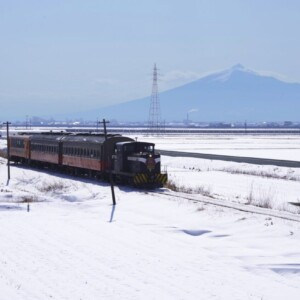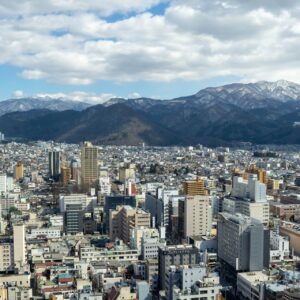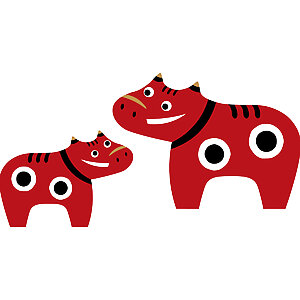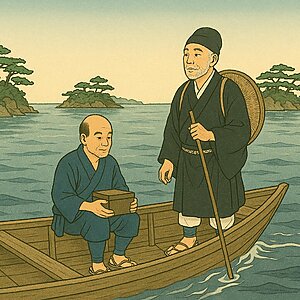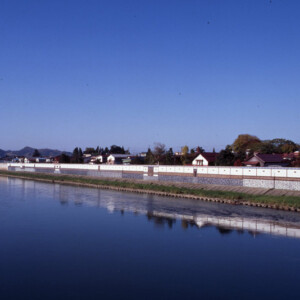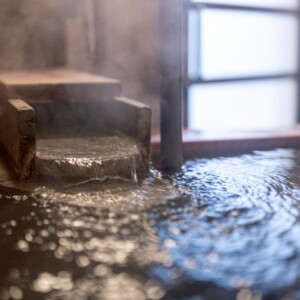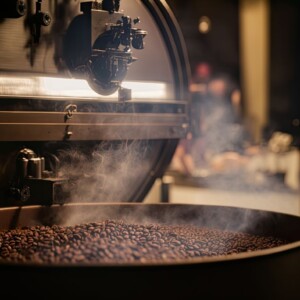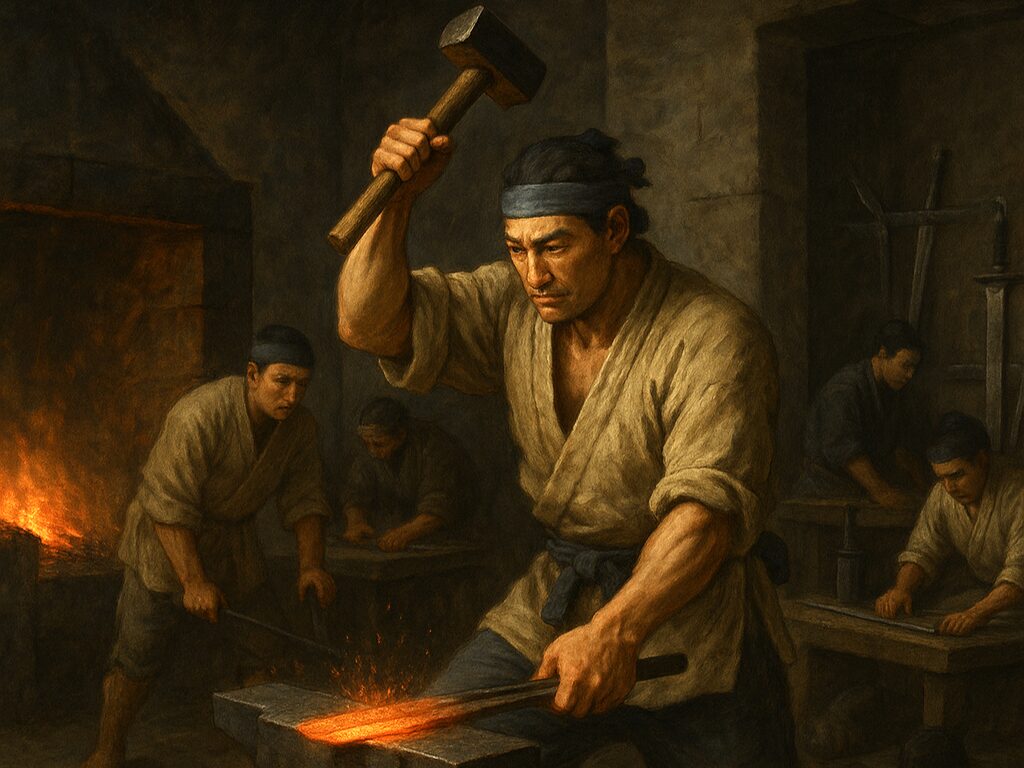
[Part 1] Who is the Oshu "Maikusa Blacksmith"? Explaining the influence they had on the development of Japanese swords!
table of contents
Introduction
Japanese swords have always pursued superior functionality, such as not breaking, not bending, and cutting well.
As the world's most advanced forging technology, it continues to captivate many people not only for its martial arts skills but also for its beauty.
The Japanese sword itself refers to a single-edged, curved sword that appeared towards the end of the Heian period, and these are made by specialized craftsmen called "swordsmiths," "sword artisans," or "swordsmiths."
Forging, the process of hammering heated iron to form it, requires a special technique that combines boldness and delicacy, as well as a high level of craftsmanship that requires chemical knowledge of how to handle iron.
Speaking of swordsmiths, one of the oldest groups of swordsmiths was located in the Tohoku region.
the Mokusa school, which is said to have been based in the area around Ichinoseki and Hiraizumi in present-day Iwate Prefecture .
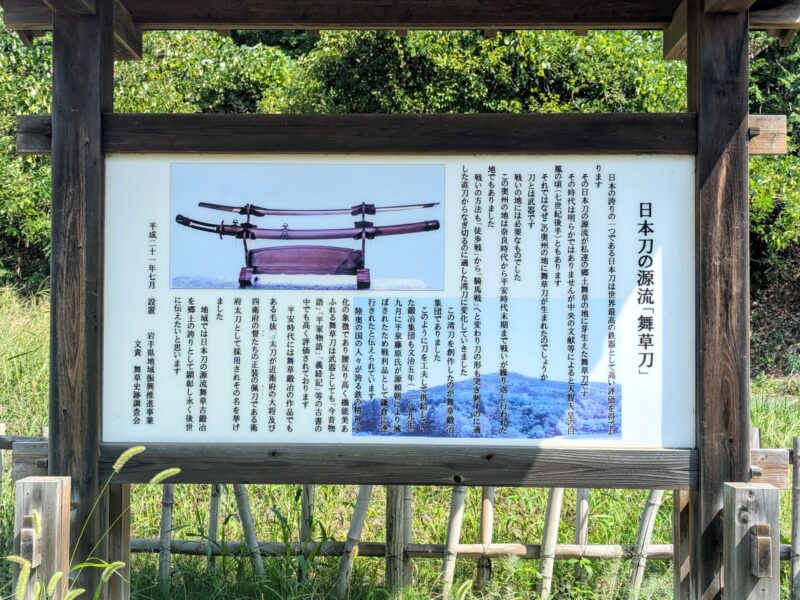
In fact, it is believed to have had a major influence on the development of Japanese swords from their birth, and many excellent examples of these swords are featured in ancient documents.
On the other hand, the oldest surviving Maikusa sword was made in the late Kamakura period, and details about the early swords made by the Maikusa school are unknown, making it one of the historical mysteries.
In this article, we will take a look at the mysterious Maikusa school of swordsmiths from Tohoku.
What is Maikusa School?
First, let's take a look at what kind of swordsmith group the Maikusa school was and what we currently know about it.
The name "Maikusa" appears in the oldest sword book
The oldest known sword book is Meijin, written in 1316 (Showa 5) at the end of the Kamakura period. The original has never been found, but several later copies have been handed down, and in these the name of the Maikusa school is written.
The most famous copy is the Kanchiin version, dated 1423 during the Muromachi period, and an even older copy, the Ryuzoji version, dated 1351 (Northern Court era; Shohei 6 in the Southern Court era), has been discovered, but this article will refer to the description of the former Kanchiin version.
According to this, 42 swordsmiths are particularly noted as "skilled from the Age of the Gods to the present day," and it is noteworthy that eight of them are Oshu blacksmiths, that is, swordsmiths of the Maikusa school.
Specific swordsmith names include:
- Mt. Gassan
- Recitation
- Houji (Hoju)
- Toshiyasu
- Morifusa
- Moufusa
- Masayasu
- Onimaru
It is no exaggeration to say that the name "Gassan" in particular is one of the most famous names even today.

Gassan Yuan Kunimune, Muromachi period, Eisho 18 (1521) Source: ColBase (National Institutes for Cultural Heritage Collection Integrated Search System)
Southern Iwate Prefecture has been a source of high-quality iron since ancient times
The region where the Maikusa school was active has been known since ancient times for its ability to extract high-quality iron materials, and it is said that before the invention of the Japanese sword, the Emishi wielded a distinctive iron sword called the "Warabito."
The Warabite sword gradually acquired a curved blade and openwork on the handle, and this is now thought to be the form that led to the "curved sword" of Japanese swords, a long-standing mystery.
The Maikusa school is thought to be a group of swordsmiths that descends from the Warabite sword, and this was greatly influenced by the long-running conflict between the Emishi and Yamato in the Tohoku region known as the "Thirty-eight Years' War."
can be seen as the "Efu no Tachi" (guard swords) worn by military officers of the "Efu" who were responsible for guarding the Imperial Court
Many samurai preferred to use Oshu swords, and it can be said that the Maikusa school, which originated in Tohoku, played a fundamental role in the birth and spread of Japanese swords.
The oldest example of a Maikusa sword and a treasured sword of the Genji clan
It is no exaggeration to say that the Maikusa sword is one of the roots of the Japanese sword, and the oldest surviving example is held at the Ichinoseki City Museum in Ichinoseki City, Iwate Prefecture.

"Maikusa," exudes a simple yet magnificent elegance, and is characterized by the "hammered finish" on the nakago, the core part that fits into the handle.
Tsuchi means hammer, and since swords are shaped by hammering, the marks left by the hammering give them the appearance of a katana.

Unfortunately, no older Maikusa swords have been found, but the presence of this sword, with the two-character inscription "Maikusa" carved into the tang, can be said to be in a class of its own.
The relationship between Maikusa swords and the samurai masters, the Minamoto clan
Another point worth mentioning is the relationship between Maikusa swords and the head of the samurai clan, the Minamoto clan.
The most famous treasured sword among the Genji clan is the Higekiri, which , according to the Sword Scroll of the Tale of the Heike, is said to be a sword that Minamoto no Mitsunaka, said to be the founder of the Genji clan, had forged by a Chinese craftsman living in Chikuzen.
The other sword is a tachi called "Kneemaru,"
The name "Higekiri" is said to have come from the fact that Minamoto no Yoshiie wielded this sword during the Battle of Oshu (the Nine Years' War) in the early 11th century, when he struck the heads of 1,000 prisoners, even cutting their beards in half.
In the Tale of the Heike, Higekiri is said to have been made by a craftsman from the Tang Dynasty, but in the Tale of the Heiji, which is also a military tale,
The work was by a blacksmith named Bunju, who lived in Oshu.
It is written:
Furthermore, in the section on the Taiho era in "Meijin (Kanchiin version),"
Bunju, a resident of Mutsu Province, made a sword called Kenshichudaihi□ki□.
It is acknowledged that there is.
"Mutsu Province" refers to "Mutsu," or Oshu, and "Kenshichudai" refers to the "repeated generations of the Genji clan," so it can be assumed that "Hi□ki□" probably refers to "Hikekiri (Hikekiri)."
This "Bunju" refers to a swordsmith who is said to be the father of "Hoju," who is listed in the book as a master swordsmith of Oshu

Oshu Hoju, Kamakura period, 13th century Source: ColBase (National Institutes for Cultural Heritage Collection Integrated Search System)
Therefore, it is noteworthy that the story contains the legend that the Genji's treasured sword was made by a blacksmith of the Maikusa school.
In relation to this, the section on "Swordsmiths of different eras" in Meijin also lists the maker of Higekiri "Fushu ." This is also one of the master craftsmen listed in the book, and Japanese literature scholar Junko Watase has proposed the theory that "Fushu" and "Monju" are the same person, based on the pronunciation and spelling.
On the other hand, some have pointed out that the Emishi who came under the control of Yamato were called "prisoners of war," and that this may be related to the meaning of the word, but this is not clear.
It is important to note that Meijin introduces swordsmiths by era and that different traditions are mixed together in each era, but in any case, it is clear that Oshu swords had a special position among the samurai of the time, especially the Minamoto clan, who held a central position.
The sharpness of the Maikusa sword as seen in sword books and stories
We have seen that Maikusa swords, or Oshu swords, were favored by samurai including the Minamoto clan, but why did they enjoy such popularity?
The simplest and most fundamental reason for this is probably its sharp cutting edge.
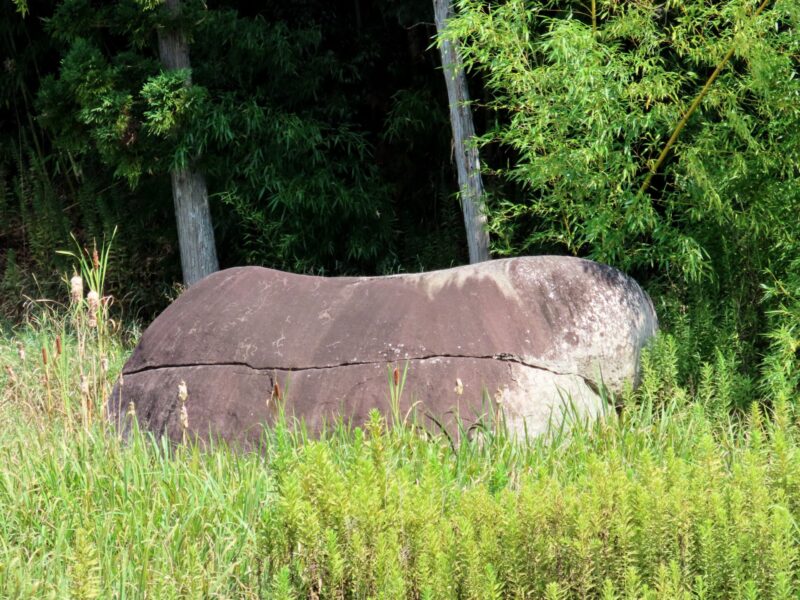
In this case, the sharpness naturally refers to the weapon's performance based on its toughness, and it can be imagined that combining high cutting power with durability was an urgent need during the fierce battles of the day.
As mentioned above, there is another legend that says that a swordsmith of the Maikusa school named "Fushu" was the creator of the Genji's treasured sword, Higekiri, but here we will introduce an interesting description of the making of this sword.
The following is recorded in "Kaji Myoji Ko," a sword book from the late Muromachi period with a colophon dated 1452:
The author of the sword called Kogarasu of the Taira clan is this small crow, which is held in the Hokke-do shrine of Kamakura. He is also said to be the author of the sword called Kiri-i, which is said to cut down the warriors, so it is called "Kirisuhe." He is also said to be the author of the Hike-giri swords of the successive generations of the Genji clan, Shirasuto, but in fact it is a work of fiction.
Roughly translated,
"He is the creator of the Taira sword Kogarasu. Kogarasu is kept in the Hokkedo shrine in Kamakura. He is also said to have made a sword called "Kirii," so named because it was used to cut down armored warriors. The creator of Higekiri, a treasured sword passed down through the generations of the Genji clan, is unknown, but it is said to have been made by Fujoshi."
The story is about the sharpness of the Maikusa sword and recitation.
here that Fujusaku's sword was given the title "Kirisue" (Cutting Sword)
This episode shows the incredible sharpness of the chant, but in reality, is it possible to cut through an armored warrior through his armor?
This issue has been frequently discussed among samurai since ancient times, and it appears to have been discussed as an important issue in warfare.
In conclusion, there have been successful examples in history of so-called "kabuto-wari" (splitting helmets), so it is likely that it is not impossible depending on the performance difference between the sword and armor and the cutting method.
As a result, the sword became stronger and sharper, and the armor became more durable, and they developed in a way that mutually enhanced each other.
Of course, it is not difficult to imagine that there were various conditions at the time, such as the poor rigidity of the iron material used in the armor.
However, since there would have been a desire for a sword with a sharpness that could nullify defenses, it is not surprising that such phenomena have been passed down as legends.
Incidentally, when the Taira clan's treasured sword, Kogarasumaru, was investigated by Honami Koetsu in the early Edo period, it is said to have had the inscription "Amakuni" (Heaven), a legendary name given to an early swordsmith, but the existing example is uninscribed.
Furthermore, the characteristic structure of the Kogarasumaru, where the blade becomes double-edged from the middle to the tip, is called "double-edged blade" and is also called "Koi-garasu" after the name of this sword.It is striking that among the Warabite swords, which are the origin of the Maikusa sword, there are swords with double-edged blades like other ancient swords.
The sharpness of the Maikusa sword, which also appears in the military tale "Gikeiki"
Additionally, the sixth volume of "Gikeiki," "The Final Moments of Tadanobu," there is a scene that describes the sharpness of the Maikusa sword.
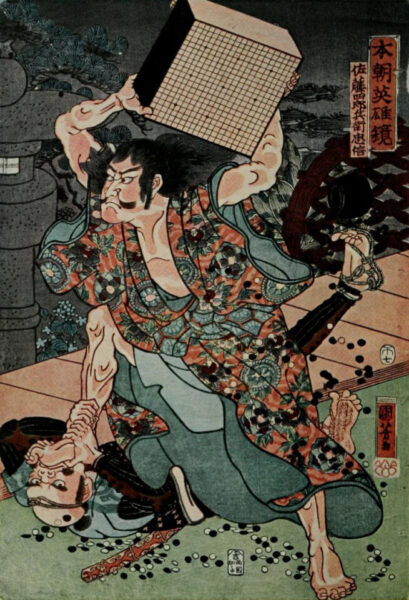
This is the scene where Yoshitsune's chief retainer, Sato Tadanobu, acts as a decoy to allow his lord to escape, and although the details differ from historical fact, the sword used in his final suicide is a maikusa sword.
The following is an excerpt from the relevant section of the Gikeiki.
What a pitiful sword, made to order by Maifusa, and with the words "make it well, make it well," it has the effect of being very effective.
mentioned here is thought to refer to the "Maikusa Takefusa" from around the mid-10th century it brings to mind inscriptions with a similar sound, such as "Morifusa" and "Moufusa,"
Tadanobu's lines reveal that he praises the sword, which was carefully custom-made by a swordsmith in Maikusa, for its sharpness, which means that he feels almost no resistance when committing seppuku.
Although the dates of Maifusa and Tadanobu do not match, it is quite possible that swordsmiths who inherited the name continued for several generations.
The Gikeiki is thought to have been written sometime between the Northern and Southern Courts period and the early Muromachi period, but even in that period, the Maikusa sword was recognized as an extremely renowned work of art, as it praises its sharpness as far back as the time of the Genpei War.








![[Part 2] Who is the Oshu "Maikusa Blacksmith"? Explaining the influence they had on the development of Japanese swords! A swordsmith offering a sword to the shrine (image)](https://jp.neft.asia/wp-content/uploads/2025/09/381015b3269eee5482fc4d248acc74b3-150x150.jpg)
![[Part 2] Who is the Oshu "Maikusa Blacksmith"? Explaining the influence they had on the development of Japanese swords! Maikusa blacksmiths traveling to various places (image)](https://jp.neft.asia/wp-content/uploads/2025/09/881c8fae8d0bc6cdbd3812adefe94a14-150x150.jpg)
![The missing link in the birth of the Japanese sword? What is the "Warabito" wielded by the Emishi? [Part 2] Image of Ezo blacksmiths](https://jp.neft.asia/wp-content/uploads/2025/08/aa2cc4e3e2621b305b50876d1bdbcf6e-150x150.jpg)
![The missing link in the birth of the Japanese sword? What is the "Warabito" wielded by the Emishi? [Part 1] Image of an Emishi warrior](https://jp.neft.asia/wp-content/uploads/2025/08/7ea4d59390237969ff242908a34b766e-150x150.jpg)
![What is Seikan Ferry? Eight decades of supporting the human flow and logistics between Honshu and Hokkaido [Aomori Prefecture] 23246977_m](https://jp.neft.asia/wp-content/uploads/2025/05/23246977_m-150x150.jpg)
